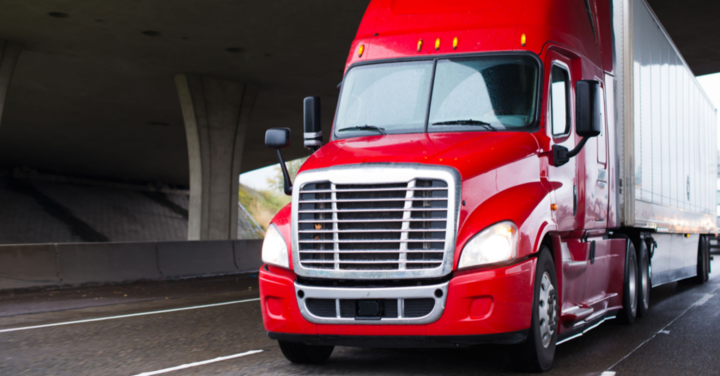As wide open spaces continue to call out to the hearts of those longing for a quieter life, many don’t realize the impacts this has on the supply chain. Communities that have enjoyed living on the fringe for generations are continuing to be impacted by supply chain bottlenecks. When discussing rural Arizona food shortages, AZ Central reported that “Supply chains often crack when there aren’t a lot of vendors or suppliers serving a region, especially if there […] are transportation issues such as the current nationwide shortage of truckers.”
The nationwide shortage of truckers has appeared completely unbiased, stretched across job openings for flatbed, reefer, and dry van positions. Because carriers are the lifeblood of the supply chain, which provides for the majority of local industry, shipping companies must leverage all transport forms to leave fewer communities struggling to find necessities.
The State of the Shipping and Trucking Industry Market Today
Although much of the US no longer feels the intensive strain of the pandemic-driven supply chain chokes, localized shortages will continue to remain as the active supply chain cracks get filled. While many companies try to incentivize a career in logistics or dry van trucking with financial perks such as competitive hourly pay or hiring bonuses, the available workforce is still concerned it’s not enough.
Individuals are getting hit by the sting of inflation from every angle. The cost of transportation has had a significant part in these rising costs. Bloomberg abbreviated the latest Producer Price Index report, sharing that “Looking across the various modes, the data showed an 18.3% jump in shipping by truck and a 29% surge in ocean freight costs from January of last year, the largest 12-month increases on record. The cost of shipping by rail was up by the most since 2011 and air cargo inflation was the highest in a decade […]
What’s more, the prices of support services and warehousing have also soared. Arrangement of freight and cargo services cost a record 83.6% more in January than a year ago, while storage services were up an unprecedented 17.4%.”
The pandemic and driver shortage are not all that have raised the cost of transportation. The boom of e-commerce has changed consumer habits and expectations dramatically. Why run to the store for two items when they can get delivered within two days or even two hours? Some consumers opt for e-commerce to minimize their gas consumption without realizing the increased fuel costs for carriers will increase the prices of the delivered products.
While the market landscape may dishearten some supply chain professionals, strategic shippers and brokers see this as an opportunity to maximize capacity by diversifying their transportation methods. Although this applies to omnimodal shipping, optimized shipping can also occur between the three main prongs of trucking services: flatbed, reefer, and dry van.
Dry Van Trucking
When researching, “What does dry van mean in trucking?” shippers will likely come across various ways to describe this semi-truck trailer’s enclosable rectangular-shaped trailer. However, those familiar with dry van trucking might simply refer to them as box trailers and focus more on the versatility of what this trailer can hold.
What It Is Best Used For
Dry van trucking’s design is profitable for palletized or boxed non-perishable items that can be stacked like a game of Tetris to maximize every square inch of space. An expedited dry van trucking team may step in to deliver products that do not require refrigeration but are temperature-sensitive such as produce.
When It Is Used
Shippers rely on dry van trucking daily to transport most goods, including retail products, construction equipment, temperature-resistant electronics, paper goods, non-perishable foods and drinks, and more.
Pros
- Can carry the widest variety of products
- It’s a very common trailer to source from local carriers or national companies.
- Least expensive due to minimal OTR driving training required.
Cons
- Because a dry van trucking vehicle is not temperature-controlled, a sudden change in weather temperatures during transit could ruin the products inside.
- The flooring may need to get repaired or replaced due to the trapped condensation within the trailer.
- A dry van’s height, width, and length requirements are unchangeable, so when an item is just a bit too big, it is impossible to transport in said trailer.
Reefer Trucking
Refrigerated freight companies take the same shell that dry van trucking uses and add insulation and a refrigeration unit to provide the ability to control the temperature within the reefer accurately. Reefer truck drivers are responsible for ensuring that the trailer is pre-cooled before pickup and maintains the correct temperature during transport.
What It Is Best Used For
Shippers use reefers to transport temperature-sensitive items. Reefers can be a standard shipping solution or a costly expedited transport.
When It Is Used
Refrigerated freight companies get contracted for dedicated loads of items such as dairy products, flowers, medicine, produce, and other perishable consumable items. Although many drivers need to source their own loads through load boards plus brokers, reefer drivers often have services requested due to their ability to control freight’s environment.
Pros
- A reefer truck can maintain its temperature in an enclosed environment to protect its freight from unfavorable or unpredictable weather.
- A reefer can also act as a warming device for products that require a consistently warm environment in transit.
- It can be utilized for dry van trucking if necessary.
Cons
- It is more costly due to the additional required licensing, equipment, and manual work during transit.
- It can be challenging to locate capacity due to freight-specific requirements that frequently rule out the shared truckload option.
- Run the risk of items spoiling during transit if equipment fails or the shipment does not fit in the van.
Flatbed Trucking
The flatbed pros and cons vary much further from the reefer and dry van due to its ability to carry much larger and heavier items than a box trailer. A flatbed trailer is essentially a board on wheels used to strap items on top for transport.
What It Is Best Used For
Shippers might consult a logistics freight broker when looking for a way to transport oversized products. Once the product is on land, that shipper or broker would need to utilize a flatbed trucking company to transport the product to its final destination.
When It Is Used
Flatbed trucks are most commonly used for OTR distances, carrying items as large as airplane wings, manufactured homes, other vehicles or construction equipment, and more.
Pros
- Flatbed trucks can carry excessive weight since they do not abide by the same size restrictions as reefers and dry vans.
- Flatbeds do not need to back up to docks so that shippers can get their products in the loading or unloading process faster than a box truck.
- With various flatbed sizes available, one should always be available for any oversized shipment.
Cons
- Because a flatbed does not have walls or a top, transported freight will get exposed to weather elements.
- Flatbed is the most costly form of road transportation due to the stricter regulations, additional manual requirements of strapping, tarping, and the careful maneuvering of oversized items.
- Requires an informed logistics team member to ensure proper communication with the carrier to prevent item loss due to incorrect strapping.
Untangle the Logistics of Dry Van, Reefer, and Flatbed Pros and Cons With AMX Logistics
To stay on top of an ever-changing supply chain, shippers must understand all of their options for each shipment. Which trailer method will lend to the product arriving at its destination without damage? Would real-time freight temperature tracking promote a positive customer experience that could be missed by opting for a dry van?
Although routine freight logistics may have been manageable in the past, today’s supply chain is rife with disruptions and wild cards.. Diversifying carriers and collaborating with other industry professionals allow shipping companies to glean from the experience of others while getting the job done.
AMX Logistics is a hybrid freight broker that combines all the brokerage connections with carriers on the ground, ready to get your freight moving. Request a quote today to learn how AMX Logistics can solve your shipping needs.


